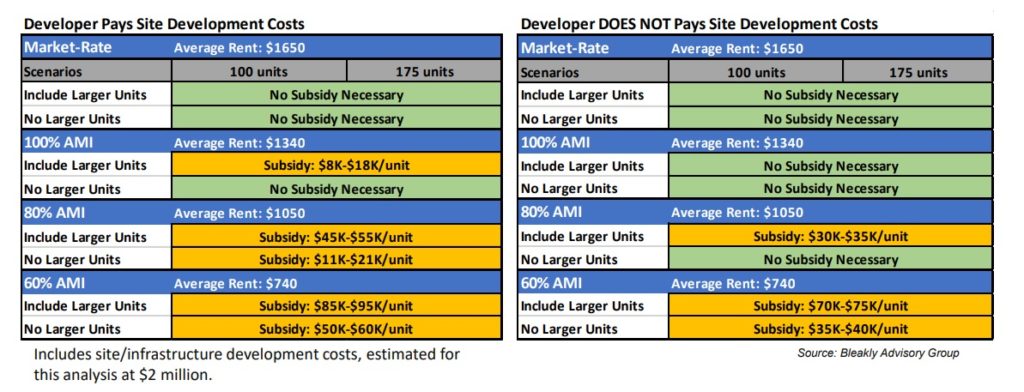Developing affordable housing at Legacy Park will require more than free land, consultant says
[adsanity id=”53551″ align=”aligncenter” /]
 Photo provided by Atlanta INtown.
Photo provided by Atlanta INtown.
The Decatur City Commission on July 15 learned that even if the city donates land to develop affordable housing, additional money may be needed.
Commissioners received a report from Cooper Carry and its subcontractor, Bleakly Advisory Group about ways to develop affordable housing on the Legacy Park property on South Columbia Drive, which was formerly the United Methodist Children’s Home. The city bought the property in 2017 for $40 million. The master plan for the park, which the City Commission adopted in December, identified affordable housing as a priority. Sites eyed for possible development of this housing are on the north side and south side of the property.
Mayor Patti Garrett said the north side of the property could have about 20 cottage units and one of the ideas being considered is using that housing for people with disabilities. The south village could hold duplexes and quadplexes, creating between 100 and 175 units of affordable housing.
Defining affordability would be part of the challenge the city faces.
Geoff Koski, president and owner of the Bleakly Advisory Group, said the greatest need for affordable housing is for people making 60 percent of the area median income, like an early-career Decatur Police officer with a $43,000 income for a three-person household.
“The greatest needs are for households at 60 percent AMI and below,” he said. “The problem is those are very difficult folks to house with brand new housing.”
That would require additional subsidies. A low income tax credit would be one way to go about it, but Koski said they are competitive and it’s a lengthy process to get them.
“The problem with it is because it’s one of the very few limited resources to get that type of affordable housing done in cities, is it’s very competitive to go after,” he said. “There’s no guarantee that that money will ever show up.”
Another option would be for voters to agree to increase their taxes to subsidize affordable housing. He noted that in Asheville, N.C., voters approved a $25 million affordable housing bond.
“Does the community want to use those tools for affordable housing? That’s the question,” Koski said.
City taxpayers already are paying more taxes to pay for the purchase of the Legacy Park property as well as paying taxes for school construction. The School Board asked voters to approve a $75 million general obligation bond for school construction, which voters did in 2015 by an overwhelming margin.
Here’s a chart breaking down the per-unit subsidy costs the city would need to find a way to provide if it wants to develop affordable housing at Legacy Park (in Bleakly’s analysis, larger units are defined as units with three or more bedrooms):

Mayor Garrett didn’t totally dismiss the idea of asking voters to support a new housing subsidy.
“I think it’s certainly not out of the realm of possibility to think about doing a bond,” she said. “I think we’d have to look hard at that to see what that would mean. We’ve already got a tax burden in buying the property. It would be in addition to that.”
Mayor Pro Tem Tony Powers said he needs more information, too.
“It’s too early for me to say we can undertake this, plus we’ve got to get someone from the delegation to carry that,” Powers said. “We’ve got to carry that through the house, but we don’t know where we are with that yet.”
Garrett said the presentation from Cooper Carry and Bleakly will be turned over to the city’s Affordable Housing Task Force for further review. She said the Task Force is expected to make recommendations to the City Commission by the end of the year.
To see the Legacy Park Affordable Housing study, click here.
